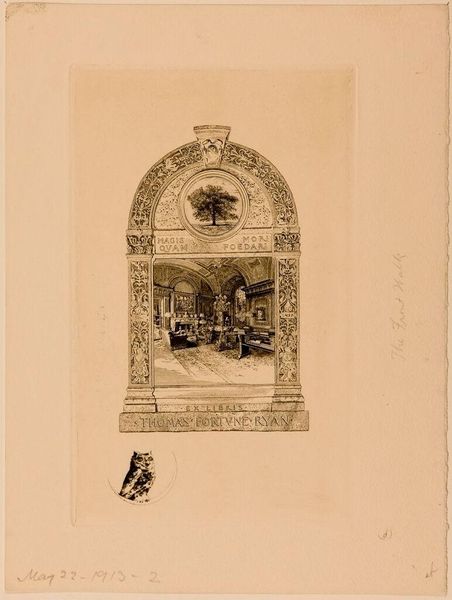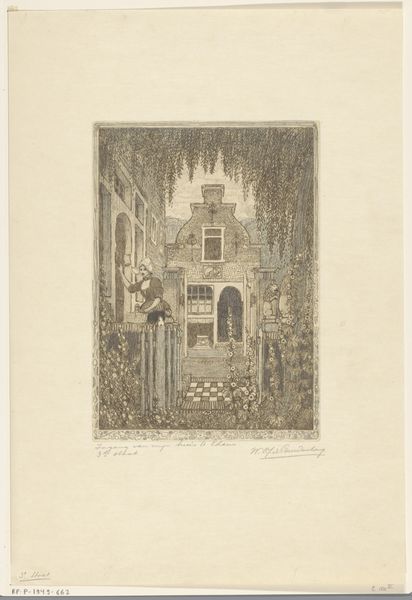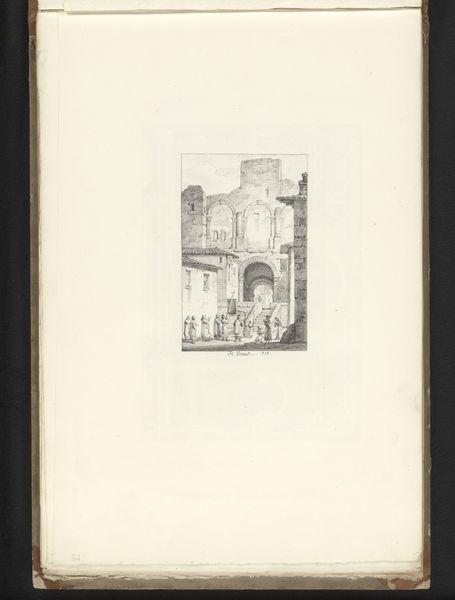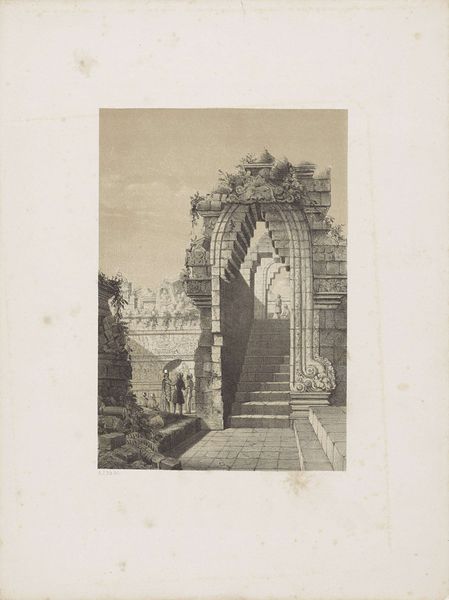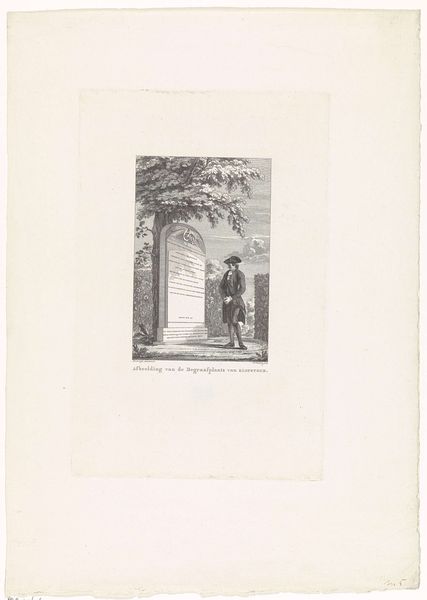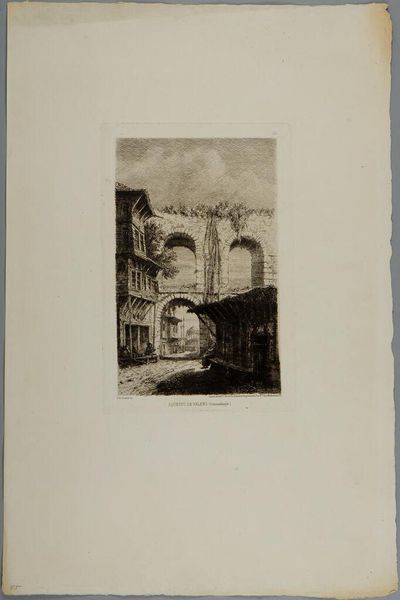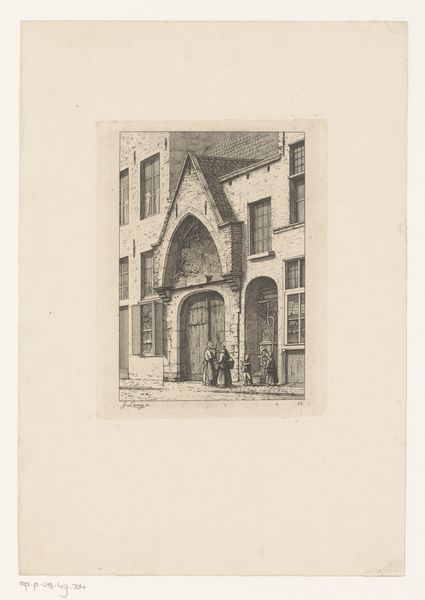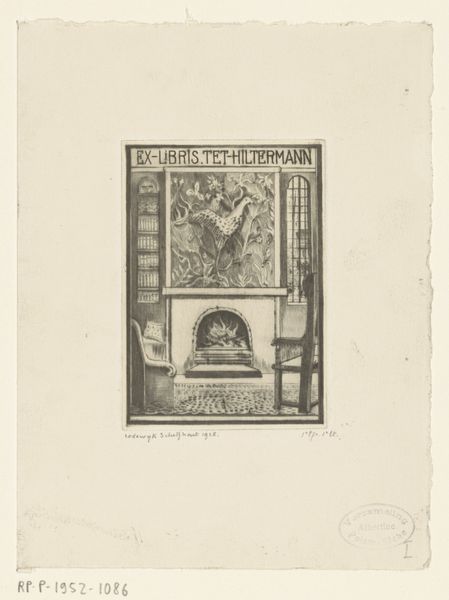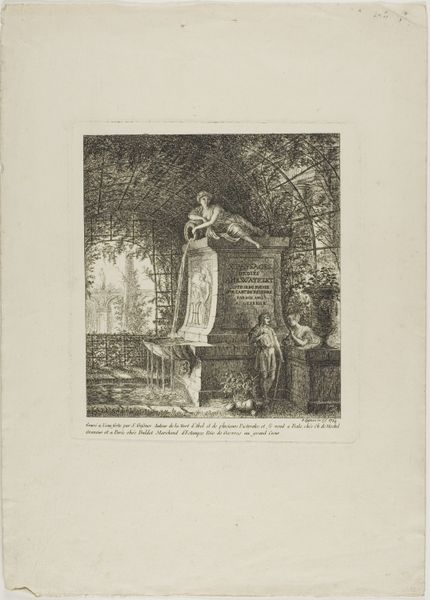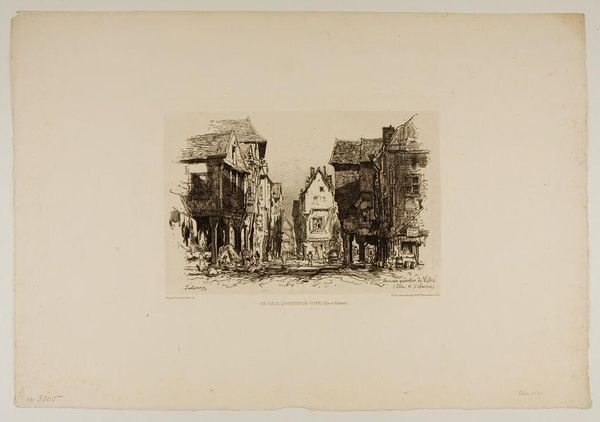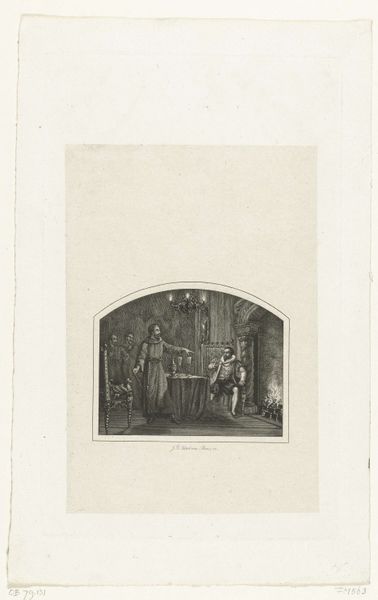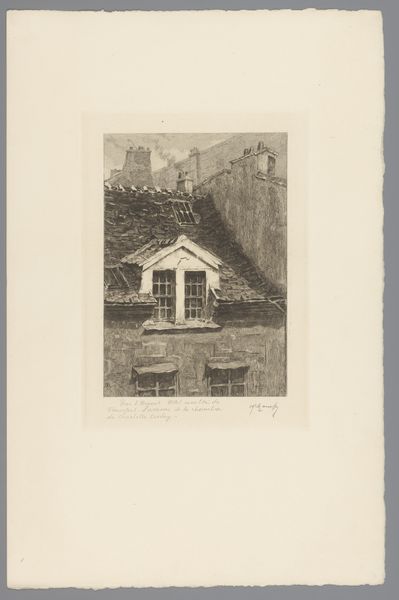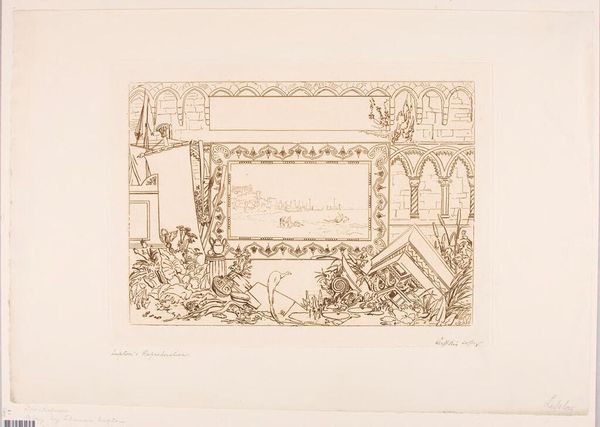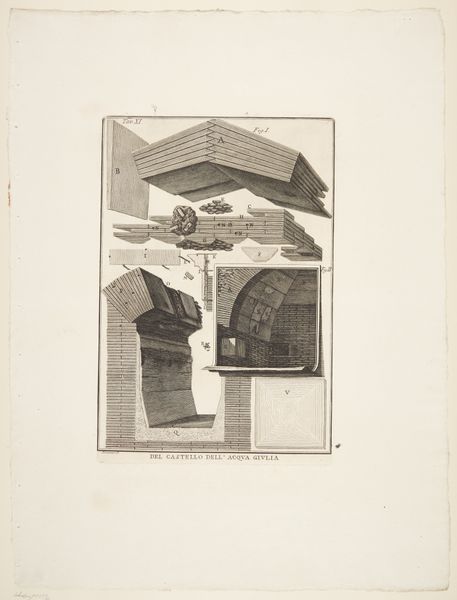
Titelpagina voor: Johan Cornelisz van Bleiswijk, Een buurlijk bagyne-boek, dienstig voor alle katholijcken, 1682 1877 - 1879
0:00
0:00
emrikbinger
Rijksmuseum
print, engraving
#
narrative-art
#
dutch-golden-age
# print
#
old engraving style
#
cityscape
#
engraving
Dimensions: height 246 mm, width 188 mm
Copyright: Rijks Museum: Open Domain
Editor: Here we have the title page for Johan Cornelisz van Bleiswijk's "Een buurlijk bagyne-boek, dienstig voor alle katholijcken," created between 1877 and 1879 by Emrik & Binger. It's an engraving, currently housed at the Rijksmuseum. The details are just incredible. I find myself drawn to the architecture, the archway leading into a town scene. The style is reminiscent of the Dutch Golden Age, but something about the narrative seems quiet and reserved. What do you make of this, especially in its relation to the Dutch Golden Age? Curator: Ah, yes. A deceptively still image, isn't it? It pulls you in. Notice the figures nestled beside the archway, almost gossiping, or sharing secrets. The light seems to cradle them while simultaneously highlighting the doorway. It begs the question, are they leaving, entering, being kept out, or simply just lingering there? The Dutch Golden Age, as you know, celebrated prosperity and worldly engagement. So how does the narrative implied by that book title *clash* or *complement* our sense of the visual setting? Are those figures seeking "Katholycken" guidance? Or simply enjoying the cool shadow of an entrance during a sunny afternoon? What do you feel looking at that? Editor: It's true, there's a certain stillness that invites contemplation. I guess I see it as potentially a subtle commentary on the role of community in religious practice. Are we sure of its link with Dutch Golden Age at all? Curator: Exactly! Maybe its creation, two centuries later, offered Emrik & Binger a chance to engage with, rather than just reproduce, a Dutch Golden Age *aesthetic*… The choice to emulate that engraving style, even so long after the era’s peak, makes it even more conceptually playful. It asks if styles themselves have "belief systems," and how they intersect, centuries apart, and even for us today. Editor: I didn't think of it that way. I was too focused on the scene itself, not its layered connection to different eras. It's fascinating how the choice of style can add another dimension to the interpretation. Curator: Exactly! Sometimes art speaks with whispers across centuries, inviting us to listen closely, perhaps like those women at the entryway, always questioning whether to cross some boundary.
Comments
No comments
Be the first to comment and join the conversation on the ultimate creative platform.
